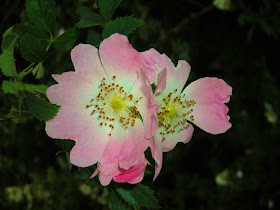Aunt Rose used to come in summer. Dressed in a floral dress and a straw hat. She would sit drinking tea and eating sweet biscuits while we played with our cars on the floor.
She spoke in an old country accent with a soft and slightly quavering voice, telling the latest news of various relations unknown to me, of her husband Uncle Charlie's garden and the terrible price of things in the village shop. It was the straw hat that impressed me most; I'd only ever seen straw used for bedding for pigs and couldn't work out how you might go about making hats out of it.
Sometimes we would go to visit Aunt Rose too. Her house smelled strange, as all houses seem to when you're young. She would ply us with home-made cake and glasses of lemonade. There were no toys in Aunt Roses house as she had no children, but soon Uncle Charlie would come in and fill the room with gentle good-humour. He'd always contrive to find something to amuse us - making paper aeroplanes out of last year's Christmas cards, showing us his collection of foreign coins and old military buttons, telling unlikely and often hilarious tales.
And then Aunt Rose might suggest "a nice walk". She led us slowly through the lanes and along secret paths pausing every few yards to point out some favourite wildflower that, "I used to pick when I was a little girl".
I was cycling through the by-roads of Cambridgeshire recently and couldn't help thinking about Aunt Rose as the waysides are once again filled with wild flowers as the council have resisted the urge to mow everything into oblivion.
Meadow Brown on Knapweed
A lot of the flowers seen then are no longer common, not because we picked them all but due to modern farming practices. Some flowers would have been dismissed by Aunt Rose as "nothing but old weeds"......
Broomrape
....but Ox-Eye Daisies would certainly have met with her approval....
.....a simple enough shot to take; just set the self-timer device and lay the camera on the ground. She would also have been delighted at the profusion of flowers which sometimes appears after the earth-moving associated with modern road-works.....
Mallow
....and just occasionally, if you keep looking at the side of the road, you'll get a pleasant surprise...
Some sort of orchid.
(Any help with more accurate identification of the broomrape and orchid would be much appreciated.)
Take care.
















































